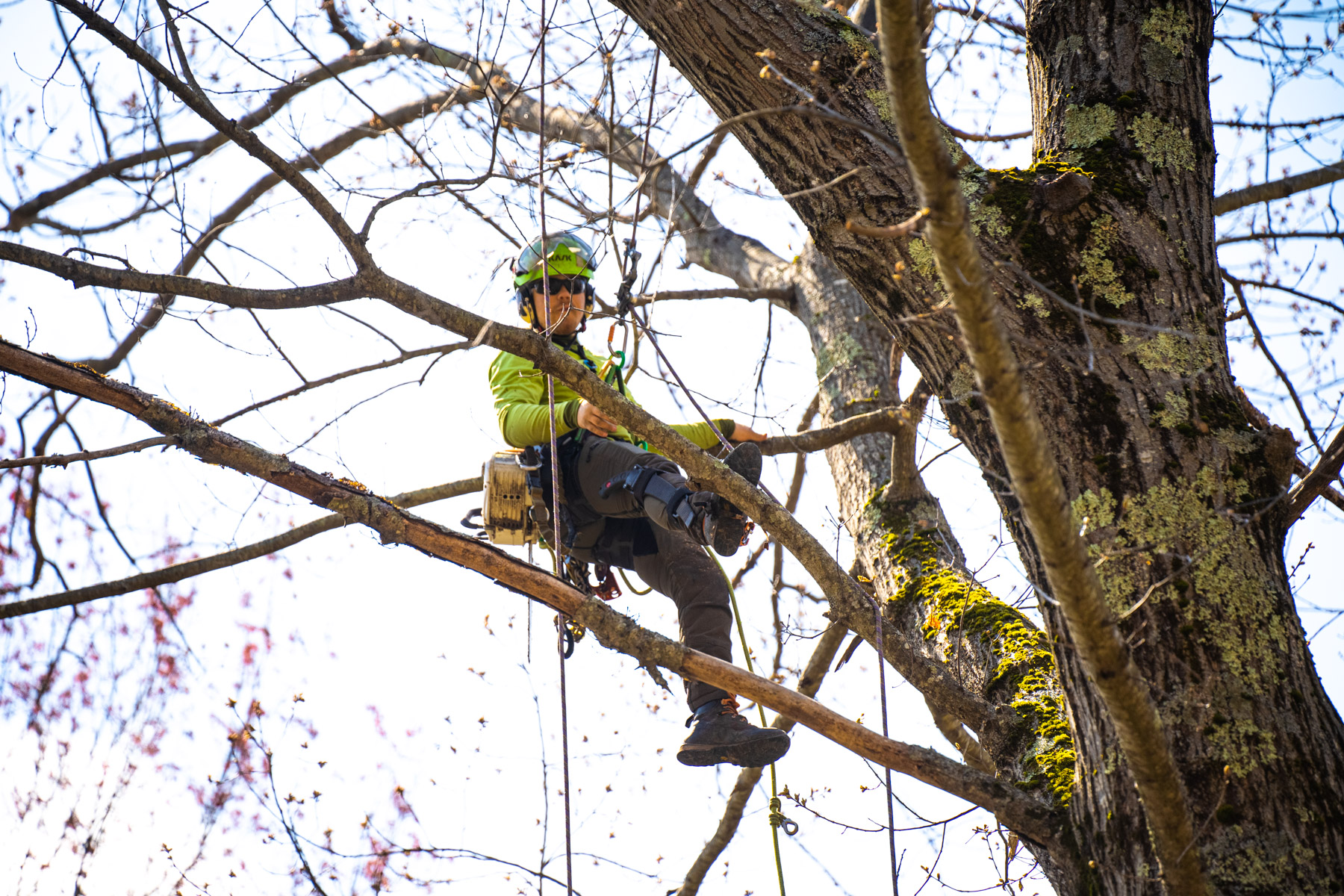
The Top 4 Benefits of Regular Tree Pruning in New England
It’s not uncommon for people to think of tree pruning in terms of aesthetics. Their tree is starting to look overgrown and messy so they realize it’s time to have it pruned. While aesthetics is certainly a factor, the benefits of tree pruning go well beyond that.
In this article, we’ll dive into why tree pruning is important on your New England property.
There are some key reasons why it’s important to keep up with this valuable service.
Tree Pruning vs. Tree Trimming
Before we jump into the benefits of tree pruning, we want to take a quick moment to explain the difference between tree pruning vs. tree trimming, as these terms are sometimes used interchangeably when they are not actually the same thing at all.
Tree trimming typically refers to hedges or shrubs that require “shaping” in order to control their size or tidy them up by trimming away the overgrowth.
Tree pruning, on the other hand, refers to the process of removing dead, diseased, or damaged branches in a way that will improve the overall health of the tree. There are also various types of tree pruning based on your goals. Tree pruning can be used to maintain the proper size and shape of a tree.
In this article, we are talking specifically about tree pruning in New England.
Why is it Important to Prune Trees?
Your trees are a valuable asset on your property and you want to make sure you’re doing everything you can to care for them properly. This will help protect your investment.
Let’s dive into the benefits of tree pruning so that you can have stronger, healthier trees at your New England home.
The Top Benefits of Tree Pruning
#1: Improve the tree structure
#2: Prevent the spread of disease
#3: Avoid safety hazards
#4: Encourage healthier growth
#1: Improve the Tree Structure
One of the key benefits of tree pruning is that it will improve the overall structure of the tree. It’s important that your trees grow strong and healthy but when you have weak limbs, the overall structure is compromised.
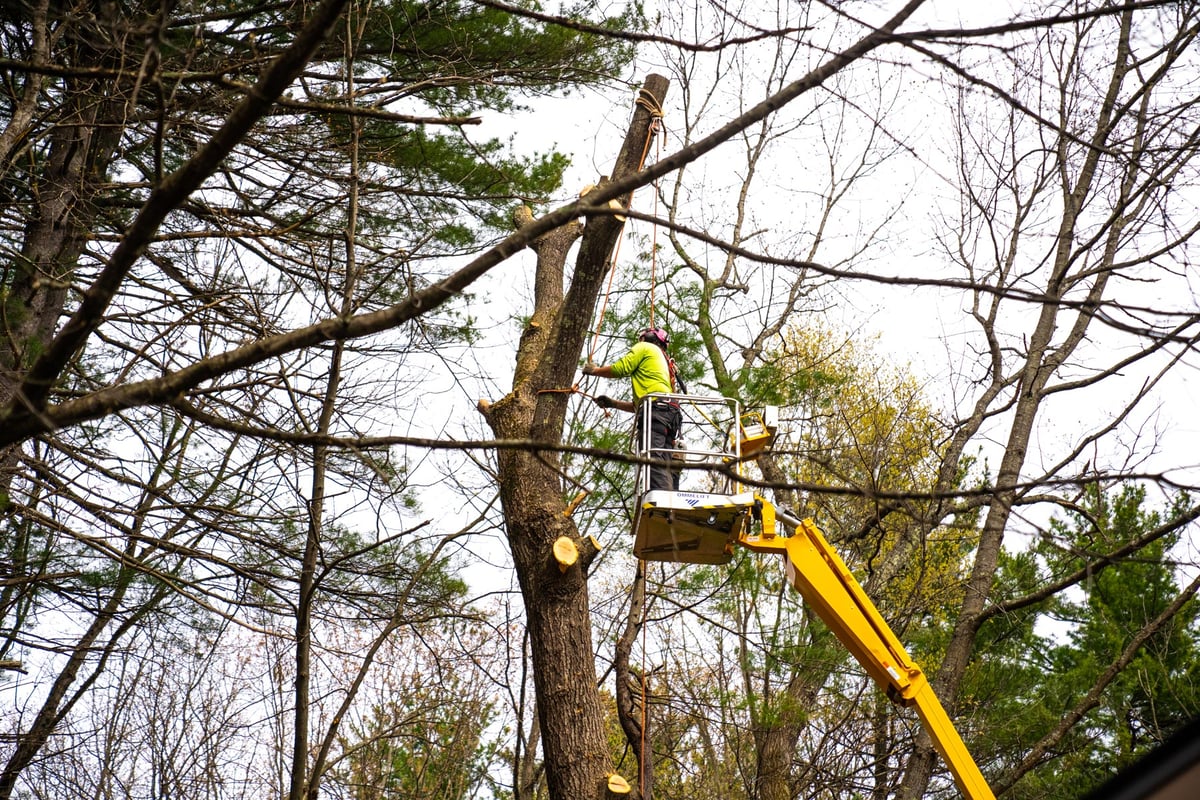
Pruning can also give you some control over the shape of your tree as you can reduce its height and promote dense foliage growth. This obviously has an aesthetic impact.
Ideally, you want to start pruning trees young so that you can have a structural effect. Even one weak limb can affect your tree’s total health. There are various structural methods for pruning depending on your goals.
#2: Prevent the Spread of Disease
Another huge tree pruning benefit is preventing the spread of decay and disease. When a tree care professional makes selective cuts to your tree, pruning out diseased, decaying, or dead branches, it helps to prevent problems from spreading.
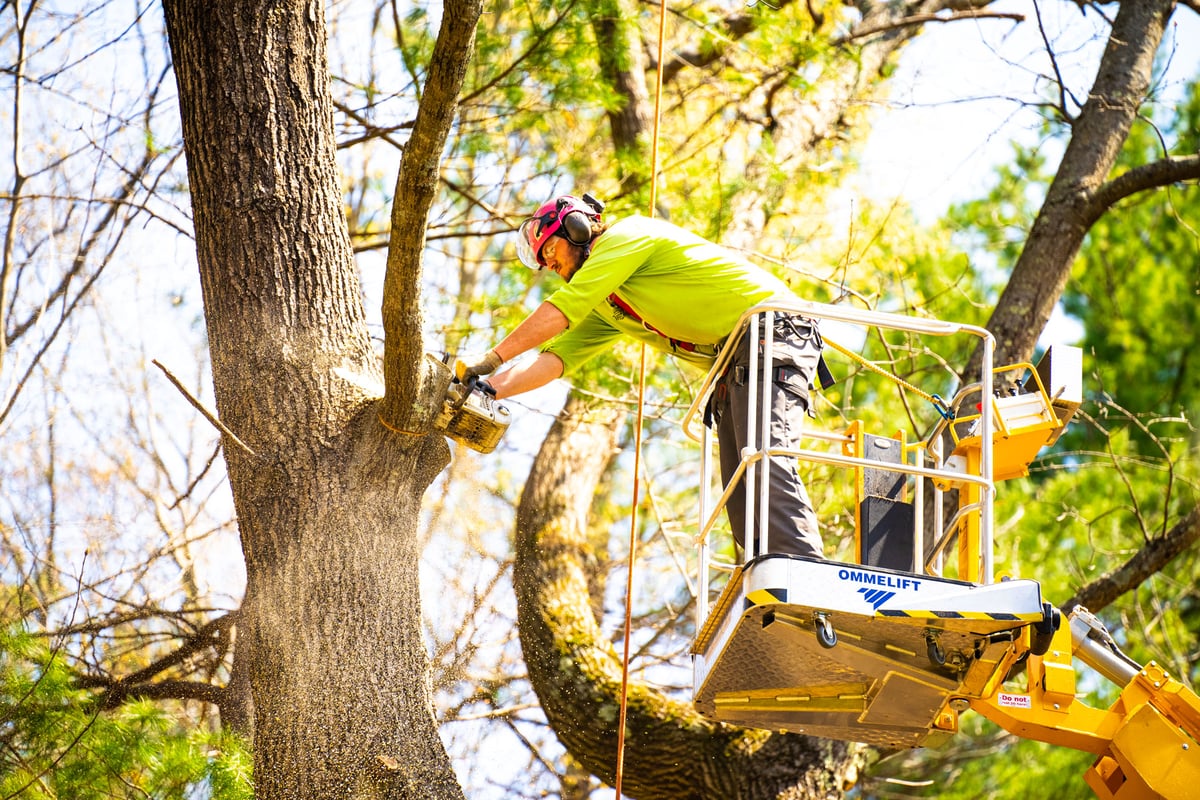
When these weakened limbs are removed, it also prevents them from falling at a later date. We’ll talk more about safety in our next point, but it’s definitely important that diseased, dying, and dead limbs are safely removed so that they don’t cause a future hazard.
Pruning is considered a preventative maintenance method for controlling not only disease but also pest problems. If a tree is infested with pests, safe removal of affected limbs might be part of the process of saving your tree.
#3: Avoid Safety Hazards
There’s also a safety component to tree pruning. Trees can pose a risk if they are diseased, infested, or damaged. It’s important that risky branches are safely removed to avoid them falling.
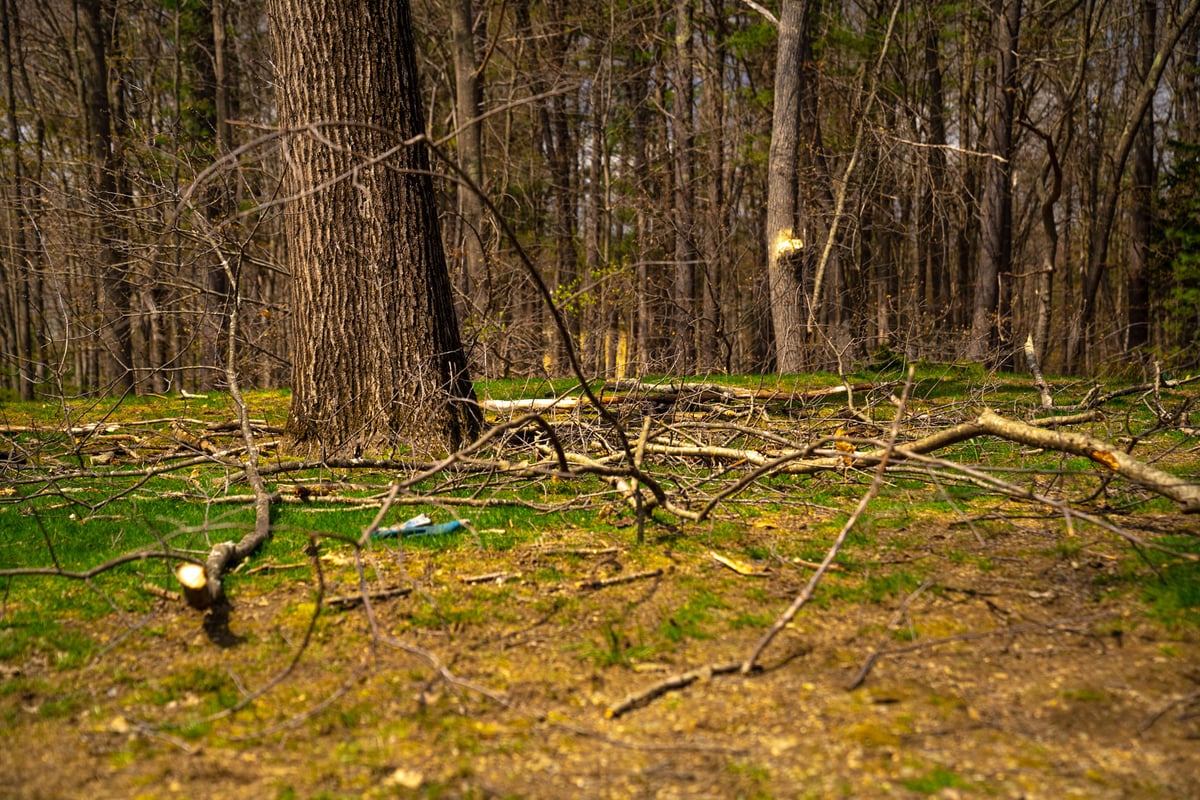
Going forward, smart pruning can also make trees safer during storms. A strong and well-balanced tree will better withstand high winds, snowfall, and other conditions that we are faced with in the Seacoast region.
The better your tree’s structural integrity, the better chance that it will withstand problems.
#4: Encourage Healthier Growth
When trees are regularly pruned, they’ll grow stronger and healthier. That might mean more profuse blooms, longer bloom times, greener leaves, and overall improved vigor.
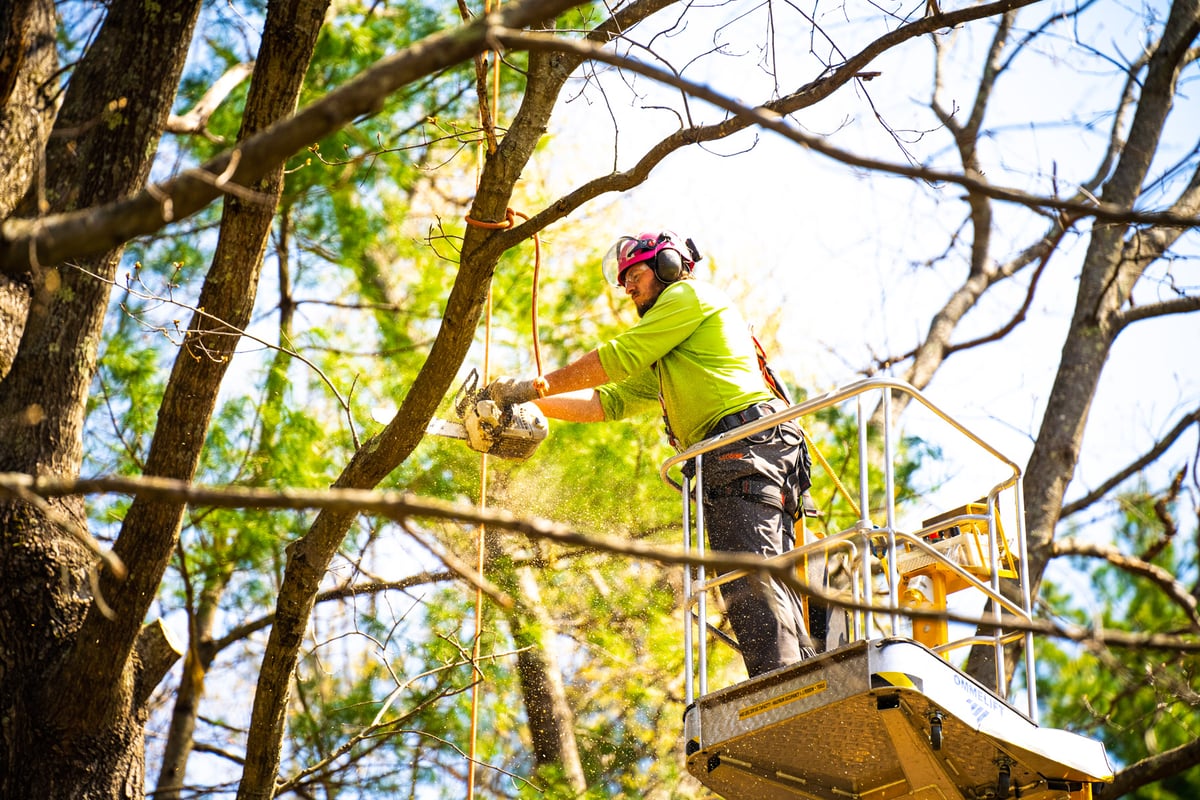
Regular pruning will also help preserve the longevity of your tree. When diseased, dying, or dead limbs are removed, your tree can stop wasting energy on trying to heal them. Once those limbs are gone, your tree will put that energy into the rest of the tree’s structure, and you’ll start to see healthier growth.
Choosing Tree Services in Southern NH, ME, and MA
When we talk to homeowners about keeping up with regular tree pruning, we explain that it is a protection of their investment in their trees. Keeping your trees healthy will benefit your property value and enjoyment.
Of course, gaining all of these benefits of tree pruning boils down to partnering with the right expert. There are many companies offering tree pruning in New England, but you want to make a wise choice to ensure the best results.
Proper tree pruning is actually pretty complex. We call it both an “art and a science” because making the right choice as to which branches to remove is critical.
It’s important to know that one outdated tree pruning practice is called “Tree Topping.” This basically involves exactly what the name says…cutting the top of the tree off. This is also sometimes called “heading” a tree.
This is an outdated practice but unfortunately, we still see it being done. People will have this service performed when they believe a tree has grown too large or is at risk of falling. But tree topping can actually create greater risk.
This practice can lead to decay and put extreme stress on the tree. It can result in disease and insect infestations and frankly, it’s just plain ugly.
It’s quite important that you choose a company that is performing proper tree pruning techniques as mistakes can be detrimental to your tree.
At Seacoast Tree Care, we’re committed to preserving the health and beauty of trees by performing vital services like tree pruning, the right way. When you make a wise choice in tree pruning services, you’ll ultimately take an important step in protecting the value of your property’s trees.
Ready for safer and healthier trees at your Southern NH, ME, or MA home? Request your consultation and get a free quote for tree pruning services. We service properties in and around Stratham, NH, Kittery, ME, and Haverhill, MA. By making a wise choice, you’ll know your trees are in good hands.


